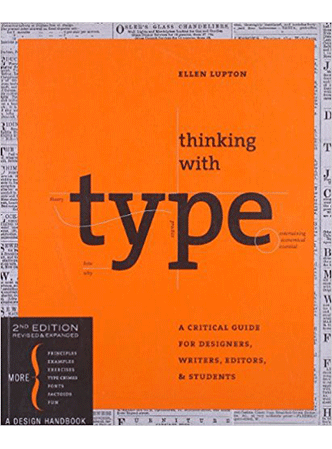

A huge thank you to everyone who has thus far subscribed, read and commented. If you’re not already subscribed then you can subscribe to I Love Typography now. We have some great articles planned for this month, including one about how to get started designing type, and…well, you’ll see. Winners will be announced in the next published article, on or around October 14.ĭo you own it? Have you read it? What do you think?Ĭoming up next is a gorgeous new font (I love it) and some more Type Terminology. I’ll put all the commentators in a hat (your names, not literally “you”), and pick one out. I have one copy two copies of this book to give away as a prize. If you don’t already own Thinking With Type, I suggest you buy it.


In conclusion, this title is an excellent compromise between the “design” books - that are really nothing more than coffee table adornments - and the weightier typography books like Bringhurst’s The Elements of Typographic Style. Moreover, there’s a complimentary Thinking With Type web site that hosts some Tools For Teachers, Exercises and even a Dumb Quotes arcade-style game. There’s also a brief but excellent Appendix that deals with punctuation, editing and proofreading. The third and final section, Grid, is concerned with the Golden Section and the importance of grids in controlling and presenting type. The second section, Text, deals with some of the finer details like kerning, spacing and alignment and includes some simple type exercises. Selecting type with wit and wisdom requires knowledge of how and why letterforms evolved. al.), designing typefaces and screen fonts. The first section of the book, Letter, briefly introduces type with a very short history, looks at type classification (Humanist, Modern, Transitional et. The book comprises three main sections, namely Letter, Grid and Text. When new terms are introduced, they are defined and illustrated in a no-nonsense way. Thinking With Type is a well structured book that does not bombard the reader with type-speak. It’s a great “propaganda” piece that you can loan to unbelieving friends and relatives, in an effort to convert them. Ellen Lupton’s Thinking With Type is to typography what Stephen Hawking’s A Brief History of Time is to physics.Įven those who already know something about typography will benefit from this title. If you own not a single typography-related book, then reserve a place on your bookshelf for Thinking With Type.


 0 kommentar(er)
0 kommentar(er)
